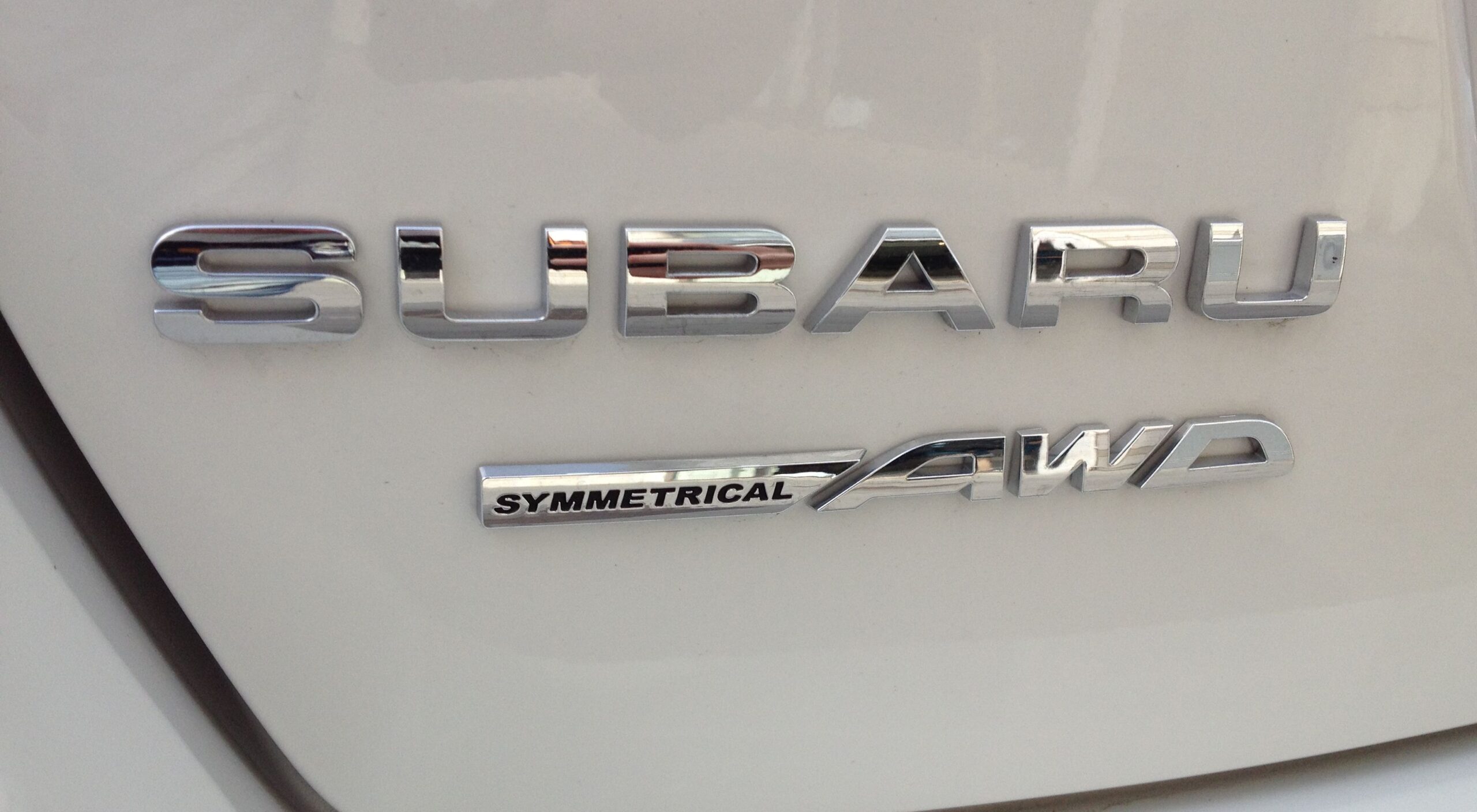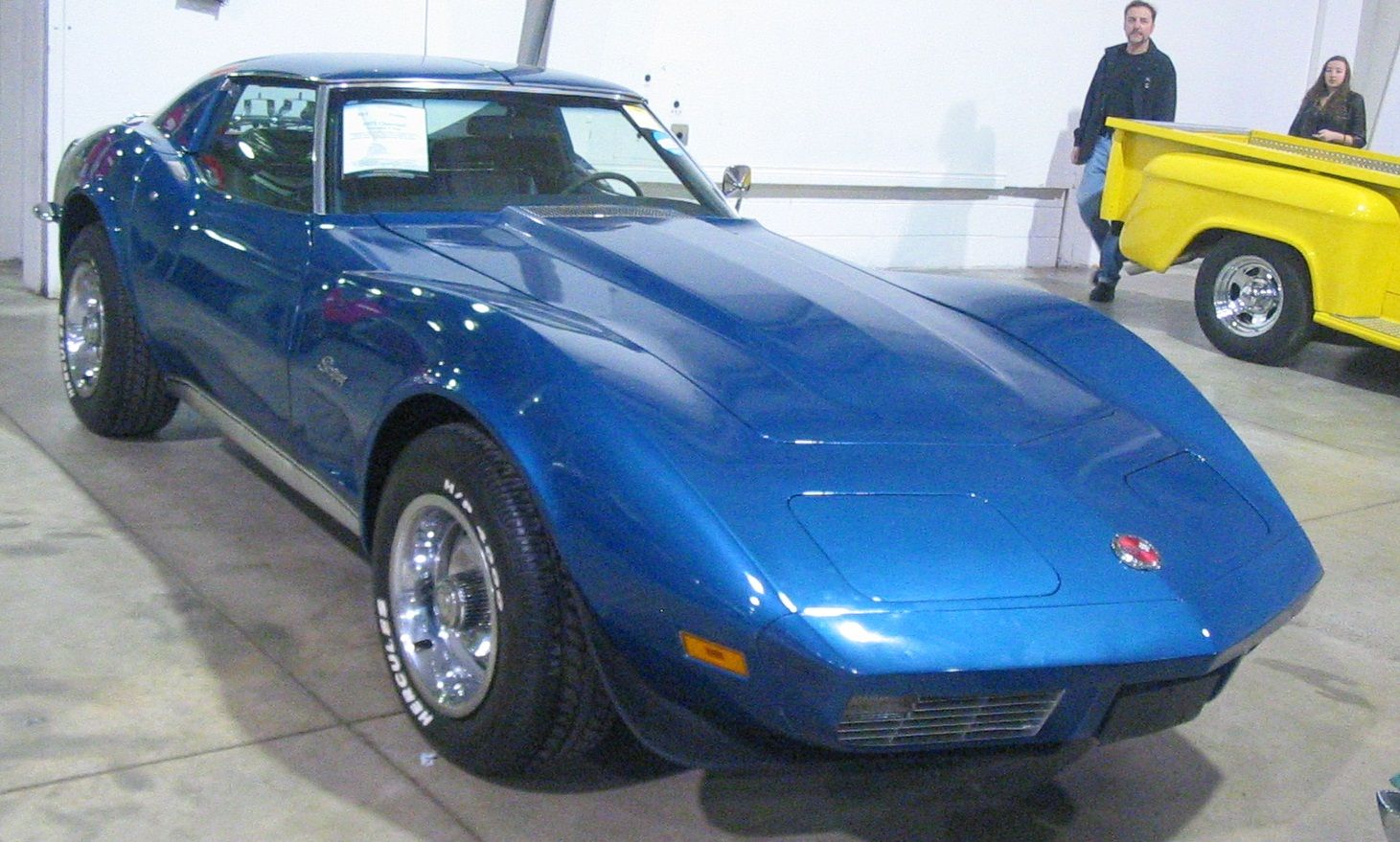
Classic cars. The very phrase conjures images of gleaming chrome, roaring engines, and a bygone era of automotive passion, a time when vehicles were as much works of art as they were modes of transportation. For decades, these magnificent machines were largely seen as enthusiast toys, perhaps a costly hobby for the well-heeled, or even a risky gamble. Yet, in a remarkable and undeniable shift within the investment landscape, classic cars have transcended their status as mere collector’s items, emerging as a surprisingly popular and genuinely worthwhile investment opportunity for a diverse range of enthusiasts and financial strategists alike.
The allure of automotive assets is truly compelling. Unlike the often volatile fluctuations of the stock market or the static nature of currency in a bank account, a vintage vehicle offers a tangible asset – one you can not only admire and meticulously care for, but also, and perhaps most thrillingly, actively enjoy by taking it for a spin. With their numbers inherently limited and surviving examples becoming rarer by the year, it’s no wonder that investment-grade classics are consistently appreciating in value, presenting a powerful alternative for those seeking robust, long-term returns that often outpace traditional investments. Indeed, certain luxury investment indexes report that specific classic cars have seen a staggering 500% increase in value since the turn of the millennium.
While the inspiring tales of forgotten “barn finds” transforming into six- or even seven-figure fortunes are certainly captivating, the encouraging reality is that the boat hasn’t sailed for savvy investors looking to enter this dynamic market. There remains a wealth of vintage models that are steadily climbing in value, year after year, making them stellar investment choices. We’re about to embark on an authoritative journey through the exciting world of automotive assets, exploring not just the significant financial upsides but also the pure, unadulterated joy of classic car ownership, and, most importantly, pinpointing some of the most promising vehicles to consider adding to your portfolio right now. This is more than just an investment; it’s an experience.
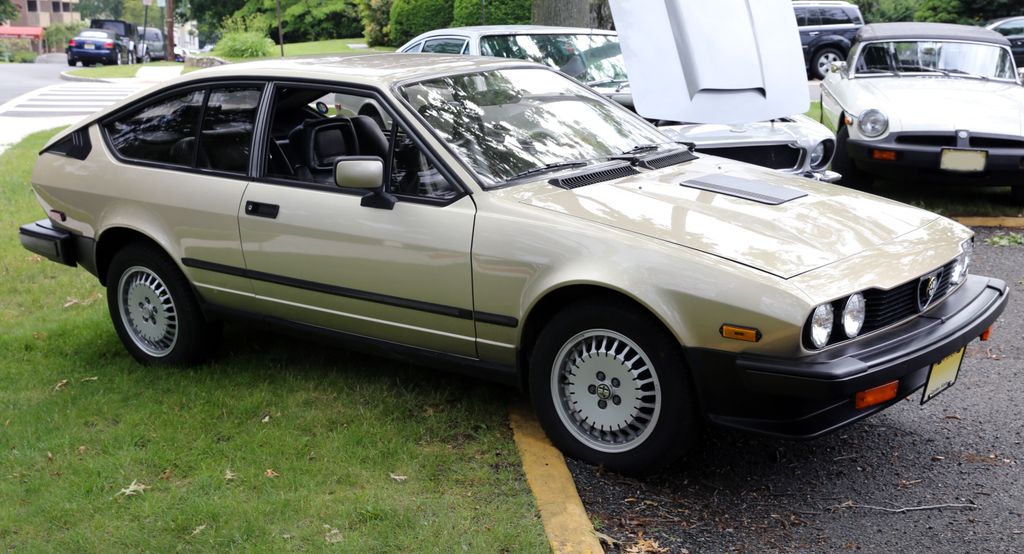
1. **Alfa Romeo GTV6**First up on our curated list of investment-grade classics is the decidedly distinctive Alfa Romeo GTV6, an Italian-designed coupe that encapsulates the unmistakable styling and engineering prowess of the 1980s. This magnificent vehicle is built upon the robust, race-derived 116 type chassis, a foundation that speaks volumes about its performance capabilities and spirited handling. It’s not just about its unique aesthetic; the GTV6 carries a rich heritage of competitive performance and meticulous engineering that continues to make it stand out in the crowded classic car market.
Despite the fact that more than 20,000 units of the GTV6 were produced, meaning it isn’t exceptionally rare in sheer production numbers, its investment appeal lies in its consistent appreciation. This model has demonstrated a steady and impressive climb in value over recent years, a trend that automotive experts anticipate will continue without abatement, reflecting a broader market enthusiasm for vintage Alfas. This upward trajectory underscores its potential as a shrewd, profitable investment, tapping into the growing global demand for classic Italian sports cars that offer a unique driving experience and a compelling story.
Investing in a GTV6 means acquiring a tangible piece of automotive art that is as engaging to behold as it is thrilling to drive. Its distinctive 2.5L V6 engine provides a powerful and melodious soundtrack, further enhancing its desirability for collectors and enthusiasts alike. The most sought-after examples for a promising investment opportunity are those from the desirable years of 1981-1986, representing the sweet spot for both pristine condition, original features, and escalating market value in the current collecting landscape. Its combination of Italian flair and a strong value trajectory makes it a standout.
Car Model Information: 2019 GMC Sierra 1500 Denali
Name: Alfa Romeo Alfetta
Caption: 1978 Alfa Romeo Alfetta GTV 2.0
Manufacturer: Alfa Romeo
Production: 1972–1987
Assembly: Arese,Rosslyn, Gauteng
BodyStyle: Sedan (automobile)
Layout: Front-engine, rear-wheel-drive layout
Related: Alfa Romeo Giulietta (116),Alfa Romeo Alfa 6,Alfa Romeo 90
Categories: 1980s cars, Alfa Romeo vehicles, Articles with short description, CS1 Dutch-language sources (nl), CS1 French-language sources (fr)
Summary: The Alfa Romeo Alfetta (Type 116) is a front-engine, five-passenger saloon and fastback coupé manufactured and marketed by Italian automaker Alfa Romeo from 1972 to 1987 with a total of over 400,000 units produced during its production run.
The Alfetta was noted for the rear position of its transaxle (clutch and transmission) and its De Dion tube rear suspension — an arrangement designed to optimize handling by balancing front/rear weight distribution, as well as maintaining a low polar moment of inertia and low center of gravity. The interior of Coupé models featured a then unusual central tachometer placement — by itself, directly in front of the driver.
The Alfetta name, which means “little Alfa” in Italian is derived from the nickname of the Alfa Romeo Alfetta (Tipo 159), a successful Formula One car which in its last iteration introduced in 1951, paired a transaxle layout to De Dion tube rear suspension — like its modern namesake.
Get more information about: Alfa Romeo Alfetta
Buying a high-performing used car >>>
Brand: Alfa Romeo Model: GTV6
Price: $34,000 Mileage: 119,513 mi.
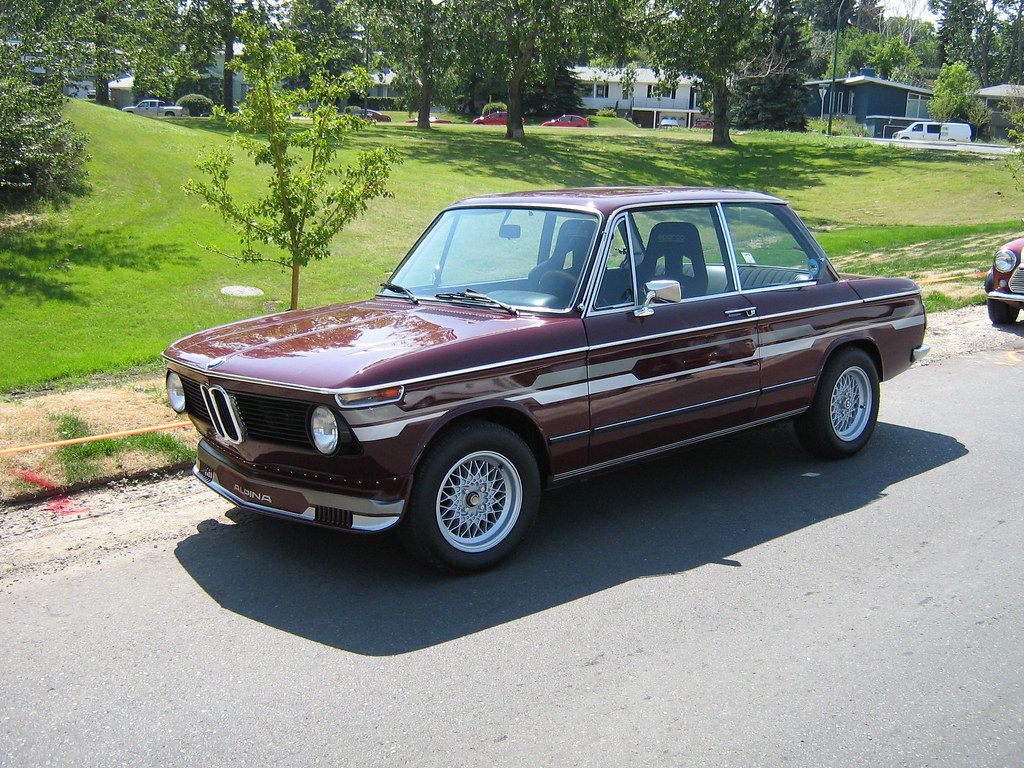
2. **BMW 2002**Next, we turn our authoritative gaze to the nimble and universally admired BMW 2002, a model that has cemented its undeniable legacy as a pivotal vehicle in launching BMW’s renowned sporting reputation. Once a widely accessible and relatively affordable classic vintage ride, the 2002 has been on a slow but absolutely unwavering ascent in value over the last decade. Today, a meticulously maintained, clean example can command anywhere from $20,000 to $50,000, clearly illustrating its strong and sustained market appreciation among collectors.
The 2002 derives its straightforward name from its potent 2.0-liter engine and its practical two-door configuration, offering an exceptional blend of spirited performance and surprising everyday usability that few classics can genuinely match. This model is considered highly desirable across all of its trims and production years due to its balanced dynamics and engaging driving experience. However, for those seeking the pinnacle of rarity and value, the exceptionally rare Targa, the more practical 2000tii Touring, and the high-performance Turbo variants are even more valuable, commanding significant premiums due to their scarcity and enhanced specifications.
For serious collectors and astute investors, examples built before 1974 are particularly sought-after, often fetching higher prices. This distinction is due to BMW’s aesthetic shift in that year, when they transitioned to a square taillight setup, making the earlier round-taillight models more original, visually iconic, and true to the initial design vision. The BMW 2002 is far more than just a car; it’s a testament to driving purity, engineering excellence, and offers a consistent long-term investment opportunity that continues to reward its owners.
Car Model Information: 1971 BMW 2002
Name: BMW 02 Series
Caption: BMW 1600-2
Production: 1966–1977,837,038 units
Assembly: Munich
Class: Compact executive car
BodyStyle: 2-door coupé , 2-door convertible , 3-door hatchback
Layout: Front-engine, rear-wheel-drive layout
Engine: ubl
Wheelbase: cvt
Length: cvt
Width: cvt
Height: cvt
Weight: cvt
Transmission: 4-speed manual , 5-speed manual ,3-speed automatic
Successor: BMW 3 Series (E21)
Designer: Giovanni Michelotti
Manufacturer: BMW
Categories: 1970s cars, Articles with short description, BMW vehicles, CS1 German-language sources (de), CS1 Italian-language sources (it)
Summary: The BMW 02 Series is a range of sporty compact executive cars produced by German automaker BMW between 1966 and 1977, based on a shortened version of the New Class Sedans.
The first 02 Series produced was the 1600-2 (later renamed 1602) in 1966. In 1975, the 02 Series was replaced by the E21 3 Series (except for the 1502 model, which continued until 1977).
Get more information about: BMW 02 Series
Buying a high-performing used car >>>
Brand: BMW Model: 2002
Price: $45,550 Mileage: 5,001 mi.
Read more about: The Science of Speed: Unveiling How Just 15 Minutes of Fast Walking Each Day Can Add Years to Your Life
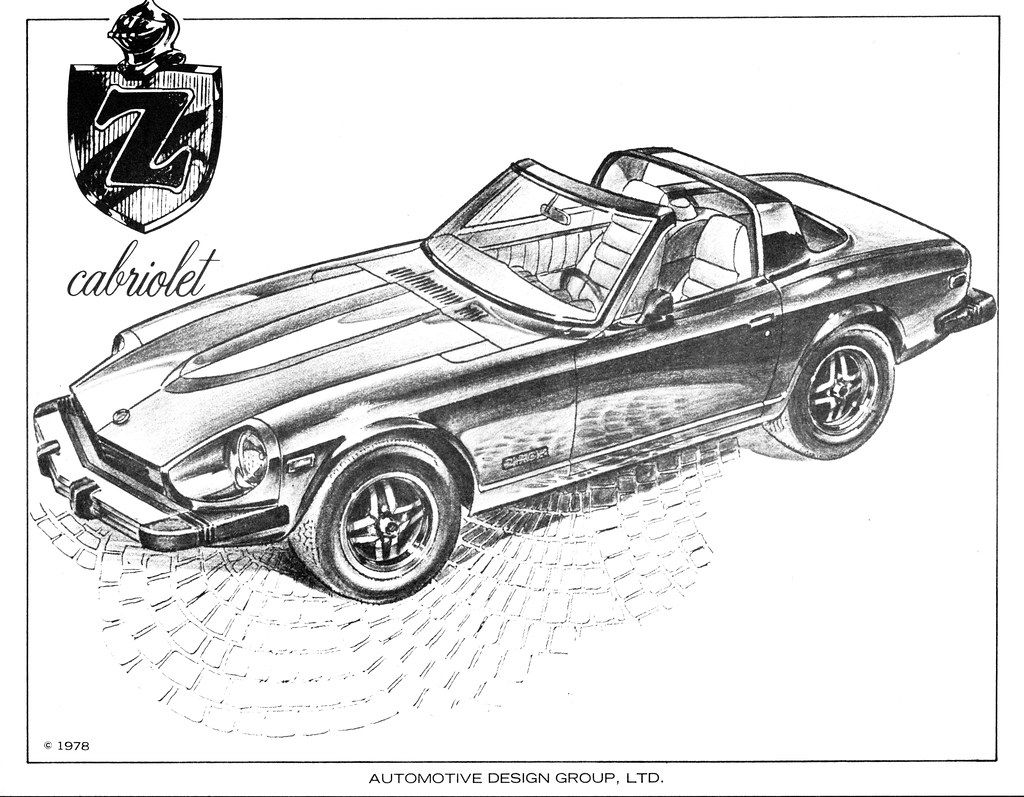
3. **Datsun 240/260/280Z**Often affectionately, and perhaps unfairly, referred to as a “poor man’s Porsche 911,” Datsun’s iconic Z lineup is, in fact, an incredible collection of vintage sports cars that continue to offer exhilarating performance and a truly engaging driving experience. Comprising the 240Z, 260Z, and 280Z, these vehicles stand as testaments to Japanese engineering and design, delivering on their promise of sportiness. What makes them particularly appealing from an investment standpoint is their consistent and impressive climb in value across all variants.
Remarkably, just a decade or two ago, these models were available for what now seems like an unbelievable bargain, highlighting their substantial and rapid appreciation in the market. This steady rise underscores a growing recognition of their robust performance, legendary reliability, and timeless Japanese styling that continues to captivate enthusiasts. The entire Z series from 1969-1978, powered by the remarkably robust 2.4L Straight-Six engine and its later iterations, offers a wide range of opportunities for the discerning investor looking for both thrill and return.
Interestingly, a unique and noteworthy aspect of the Z series market is how well expertly modified race-build examples tend to hold their value, and in some cases, even appreciate. While originality is typically paramount in classic car investment, the strong racing heritage and inherent performance potential of the Z cars mean that tastefully and professionally modified specimens can also represent a savvy acquisition. This flexibility provides an exciting avenue for enthusiasts who appreciate both the raw, track-ready performance and the significant investment potential of these legendary Datsuns, solidifying their place as true collector’s items.
Car Model Information: 1980 Datsun 280ZX 10TH ANNIVERSARY
Name: Nissan Fairlady Z (Datsun 240Z, 260Z, and 280Z)
Aka: unbulleted list
Manufacturer: Nissan
Production: 1969–1978
Class: Sports car
Layout: Front-engine, rear-wheel-drive layout
Assembly: Hiratsuka, Kanagawa
BodyStyle: unbulleted list
Designer: Yoshihiko Matsuo
Predecessor: Datsun Sports
Successor: Nissan Fairlady Z (S130)
Caption: 1970–1973 Nissan Fairlady Z
Categories: 1970s cars, All Wikipedia articles written in American English, All articles with unsourced statements, Articles with short description, Articles with unsourced statements from February 2021
Summary: The Nissan S30, sold in Japan as the Nissan Fairlady Z but badged as the Datsun 240Z, 260Z, and 280Z for export, are 2-seat sports cars and 2+2 GT cars produced by Nissan from 1969 until 1978. The S30 was conceived of by Yutaka Katayama, the President of Nissan Motor Corporation U.S.A., and designed by a team led by Yoshihiko Matsuo, the head of Nissan’s Sports Car Styling Studio. It is the first car in Nissan’s Z series of sports cars.
The S30 had four-wheel independent suspension and a powerful straight-six engine with an overhead camshaft, features identified with far more expensive premium European sports cars and coupés such as the Jaguar E-Type and BMW 2800 CS, but absent from similarly priced sports cars such as the Alfa Romeo Spider, MGB and Opel GT, which had smaller four-cylinder engines and rear live axles. The S30’s styling, engineering, relatively low price, and impressive performance resonated with the public, received a positive response from both buyers and the motoring press, and immediately generated long waiting lists.
As a halo car, the S30 broadened the acceptance of Japanese carmakers beyond their image as producers of practical and reliable but prosaic and unfashionable economy cars. Datsun’s growing dealer network—compared to limited production imported sports cars manufactured by Jaguar, BMW, Porsche, Alfa Romeo, and Fiat—ensured both easy purchase and ready maintenance.
The S30 was initially sold alongside the smaller four-cylinder Datsun Sports, which was dropped from production in 1970. The S30 240Z is unrelated to the later 240SX, sold as the Silvia in Japan.
Get more information about: Nissan Fairlady Z (S30)
Buying a high-performing used car >>>
Brand: Datsun Model: Z
Price: $69,980 Mileage: 17,351 mi.
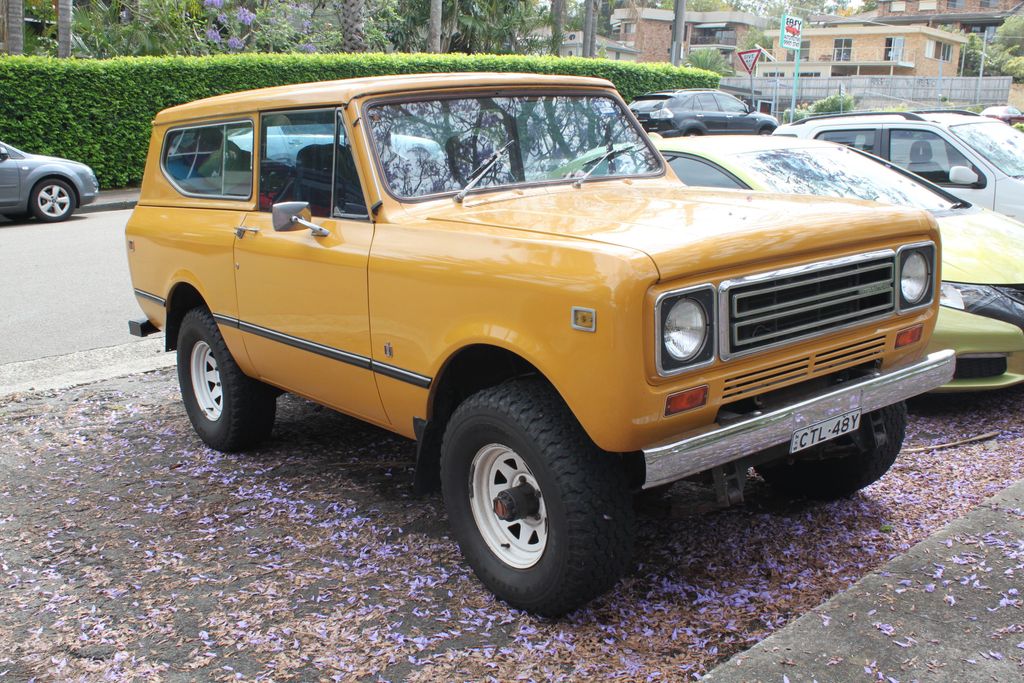
4. **International Harvester Scout (& Scout II)**While the original Ford Bronco has undeniably seen its value skyrocket, pushing it into the realm of largely unobtainable dream machines for most automotive enthusiasts, a fantastic and highly promising alternative exists in the form of the International Harvester Scout and its capable successor, the Scout II. These vintage 4×4 models offer a truly compelling proposition within the burgeoning classic SUV market, still being available at a surprisingly fair price point, making them an excellent and accessible entry into appreciating classic vehicles.
It is not uncommon at all to find some well-preserved specimens of the Scout series going for as little as $10,000 to $15,000, representing a remarkable value proposition for such robust and versatile vehicles. However, for those seeking the peak of investment potential and pristine condition, cleaner, more original, and meticulously maintained examples can fetch significantly more, sometimes upwards of $80,000. This wide value spread clearly demonstrates the substantial growth potential within the market for these rugged, go-anywhere machines, appealing to both budget-conscious buyers and high-end collectors.
Beyond their current market value and inherent utility, both the Scout and Scout II are considered amazing candidates for “restomod” off-road builds. This unique characteristic means they offer dual appeal: as original, historically significant collector pieces, and as perfect foundations for customized projects that can further enhance their value, desirability, and functionality for modern use. With desirable years spanning a generous period from 1961 to 1980, the International Harvester Scout provides a broad window for astute investment in a classic utility segment that continues to gain significant traction and popularity.
Car Model Information: 2024 Acura RDX Base
Name: International Scout
Caption: 1978 Scout II wagon
Manufacturer: International Harvester
Production: 1961–1980
Class: Full-size,SUV
Assembly: Fort Wayne, Indiana
BodyStyle: SUV
Layout: Front-engine, rear-wheel-drive layout,rear-wheel drive
Categories: 1970s cars, 1980s cars, All-wheel-drive vehicles, All articles needing additional references, All articles with dead external links
Summary: The International Scout is an off-road vehicle produced by International Harvester from 1960 to 1980. Created as a competitor for the Jeep CJ, the Scout was the precursor of more sophisticated SUVs, including the Ford Bronco, Chevrolet Blazer, and the later Jeep Cherokee.
Produced for two generations, the Scout was designed as an open-top two-door truck as a base vehicle with options to configure it as a station wagon, half-cab pickup truck, or a soft-top convertible.
International Harvester assembled the model line in its facility in Fort Wayne, Indiana.
Get more information about: International Scout
Buying a high-performing used car >>>
Brand: International Harvester Model: Scout
Price: $42,875 Mileage: 27,708 mi.

5. **Land Rover Defender**The Land Rover Defender, an undeniable icon of rugged capability, utilitarian design, and timeless British engineering, might already carry a fairly substantial price tag in its various forms. Yet, its market value continues to demonstrate a consistent and impressive rise year after year, definitively solidifying its position as a truly fantastic investment vehicle in the classic and collectible automotive world. This continuous appreciation, even for what is already considered a premium machine, powerfully highlights its enduring appeal and robust market strength among discerning collectors and enthusiasts worldwide.
A key aspect of the Defender’s exceptional investment potential lies in the availability of “basket-case” examples – vehicles that require significant and often extensive restoration but can be acquired for a much cheaper initial outlay. This creates a strategic entry point for investors. Coupled with the proliferation of expert restoration outfits specializing exclusively in vintage Defenders, this provides a clear and well-defined path for realizing substantial profit margins. Savvy investors can acquire a neglected example at a lower cost, invest strategically in its meticulous and authentic restoration, and then realize significant gains from the dramatically enhanced value and market desirability.
The Defender’s enduring legacy, its undeniable and distinctive style, and its unparalleled off-road prowess contribute collectively to its incredibly strong and sustained demand. The Land Rover Defender 110 Hard Top, for instance, is specifically noted as a stylish and capable car that, despite its escalating cost, “won’t bankrupt you if you invest in it” due to its consistent appreciation. Its remarkably long production run, generally considered from 1983-1997 for investment-grade models and with the 110 Hard Top specifically noted from 1990-2016, is a testament to its fundamental greatness and provides a robust and liquid market for investment.
Car Model Information: 2024 Acura RDX Base
Caption: 2015 Land Rover Defender 90 (Australia)
Name: Land Rover Defender
Manufacturer: ubl
Class: Small offroader
Aka: Land Rover 90, Ninety, 110, One Ten, One Two Seven (1983–1990)
Production: ubl
Predecessor: Land Rover Series III
Successor: Land Rover Defender (L663)
Assembly: Moorebank, New South Wales,Brazil
Layout: Front-engine, four-wheel-drive layout,four-wheel drive
Categories: 1990s cars, 2000s cars, 2010s cars, All-wheel-drive vehicles, All articles with unsourced statements
Summary: The Land Rover Defender (introduced as the Land Rover One Ten, joined in 1984 by the Land Rover Ninety, plus the extra-length Land Rover One Two Seven in 1985) is a series of British off-road cars and pickup trucks. They have four-wheel drive, and were developed in the 1980s from the Land Rover series which was launched at the Amsterdam Motor Show in April 1948. Following the 1989 introduction of the Land Rover Discovery, the term ‘Land Rover’ became the name of a broader marque, no longer the name of a specific model; thus in 1990 Land Rover renamed them as Defender 90 and Defender 110 and Defender 130 respectively.
The vehicle, a British equivalent of the Second World War derived (Willys) Jeep, gained a worldwide reputation for ruggedness and versatility. With a steel ladder chassis and an aluminium alloy bodywork, the Land Rover originally used detuned versions of Rover engines.
Though the Defender was not a new generation design, it incorporated significant changes compared to the Land Rover series, such as adopting coil springs front and rear. Coil springs offered both better ride quality and improved axle articulation. The addition of a centre differential to the transfer case gave the Defender permanent four-wheel-drive capability. Both changes were derived from the original Range Rover, and the interiors were also modernised. Whilst the engines were carried over from the Series III, a new series of modern and more powerful engines was progressively introduced.
Even when ignoring the series Land Rovers and perhaps ongoing licence products, the 90/110 and Defender models’ 33-year production run were ranked as the sixteenth longest single-generation car in history in 2020.
In 2020, Jaguar Land Rover introduced an all new generation of Land Rover Defender Land Rover Defender (L663) switching from body on chassis to integrated bodywork and from live, rigid axles to all around independent suspension.
Get more information about: Land Rover Defender
Buying a high-performing used car >>>
Brand: Land Rover Model: Defender
Price: $42,875 Mileage: 27,708 mi.
Read more about: Russia-Ukraine War: Critical Developments on Day 1,268
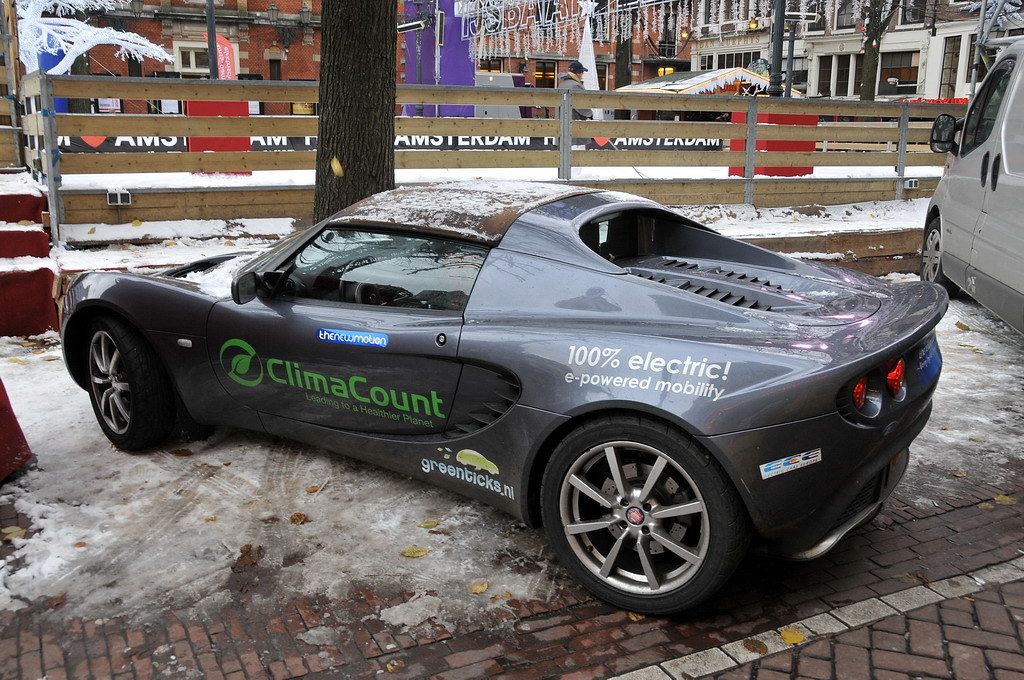
6. **Lotus Elise**In the highly competitive realm of lightweight performance and exceptional handling, few production cars in automotive history can genuinely rival the sheer brilliance of the Lotus Elise. This extraordinary vehicle was conceived and developed with an almost obsessive, unrelenting focus on minimizing weight, a radical design philosophy that resulted in one of the most agile, responsive, and dynamically engaging sports cars ever brought to market. This single-minded dedication to lightness, famously embodied in its bonded aluminum chassis, has made the Elise extraordinarily popular among purist automotive enthusiasts worldwide.
For those connoisseurs seeking a “genuine true driver’s car” that offers an unadulterated, visceral experience behind the wheel, the Elise delivers on every count. Its sterling reputation for pure driving dynamics, precise steering, and an uncanny ability to communicate with the driver has, in turn, powerfully transformed this ultra-lightweight coupe into a prime candidate for an astute investment vehicle. Its unique position in the market, appealing simultaneously to hardcore performance junkies and discerning collectors, consistently drives its steady and impressive appreciation in value, cementing its status as a future classic.
The Lotus Elise, particularly models from its highly desirable years of 1996-2011, continues to attract exceptionally strong interest in the collector’s market. Its relatively compact yet spirited 1.8L Inline-Four engine, which provides ample power for its featherlight frame, makes it a thrilling ride without being overly complex or prohibitively costly to maintain compared to some other high-performance exotics. This remarkable blend of exhilarating performance, engineering purity, and consistent market appreciation makes the Elise a highly compelling and intelligent choice for a long-term automotive asset, offering both enjoyment and financial return.
Car Model Information: 2005 Lotus Elise Supercharged
Caption: Lotus Elise S Club Racer (Series 3)
Name: Lotus Elise
Manufacturer: Lotus Cars
Production: 1996–2021,35,124 produced
Assembly: Hethel,Norfolk,England
Predecessor: Lotus Elan#Elan M100
Successor: Lotus Emira,Lotus Theory 1
Class: Sports car
BodyStyle: Targa top,Roadster (automobile)
Layout: Rear mid-engine, rear-wheel-drive layout
Platform: Lotus small car platform
Sp: uk
Categories: 2000s cars, 2010s cars, All articles with dead external links, All articles with unsourced statements, Articles with dead external links from November 2016
Summary: The Lotus Elise is a sports car conceived in early 1994 and released in September 1996 by the British manufacturer Lotus Cars. A two-seater roadster with a rear mid-engine, rear-wheel-drive layout, the Elise has a fibreglass body shell atop its bonded extruded aluminium chassis that provides a rigid platform for the suspension, while keeping weight and production costs to a minimum. The Elise was named after Elisa Artioli, the granddaughter of Romano Artioli who was chairman of Lotus and Bugatti at the time of the car’s launch.
Production of the Elise, Exige and Evora ended in 2021. It was replaced by the Lotus Emira.
Get more information about: Lotus Elise
Buying a high-performing used car >>>
Brand: Lotus Model: Elise
Price: $72,999 Mileage: 25,000 mi.
Read more about: 15 Iconic British Sports Cars: Power, Style, and Thrill
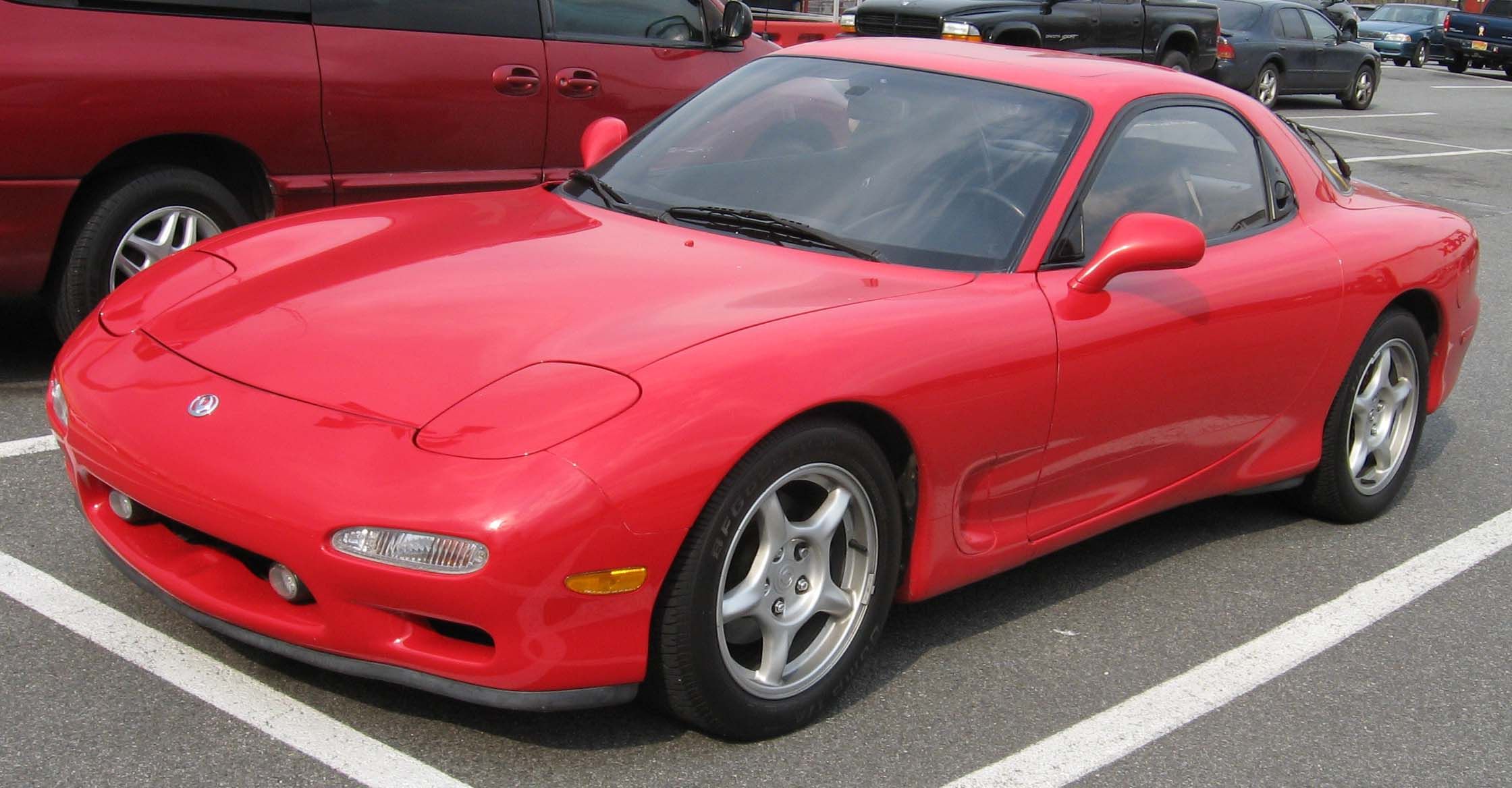
7. **Mazda RX-7**The surging global tide of interest in JDM (Japanese Domestic Market) cars has unequivocally bolstered the market value of many iconic Japanese classics, and the Mazda RX-7 stands as a brilliant and prominent example of this powerful trend. Clean, well-maintained examples of the RX-7 are now routinely fetching impressive prices, often close to $50,000, and this compelling upward trajectory in value shows absolutely no signs of slowing down. This makes the RX-7 a prime target for astute automotive investment, attracting both traditional collectors and those new to the JDM scene.
What truly sets the RX-7 apart and elevates its desirability, beyond its sleek, meticulously Japanese-designed bodywork, is its truly unique and revolutionary Wankel rotary engine. This distinctive power plant, a technological hallmark of Mazda engineering, provides a remarkably smooth, incredibly high-revving, and distinctly exhilarating experience that is unlike any other conventional piston engine. This innovative design, combined with its striking, aerodynamic aesthetics and superb handling, firmly establishes the RX-7 as nothing short of a modern-day classic, appealing to a dedicated and rapidly growing legion of fans worldwide.
The most desirable years for strategic investment in the Mazda RX-7 span a significant period from 1985 to 1997, encompassing its most iconic and sought-after generations, particularly the second and third iterations. Whether powered by the 1.1L, Turbocharged 1.1L, or the more powerful 1.3L Wankel Rotary engines, each variant contributes to the car’s growing allure and investment potential. Its distinctive character, robust engineering, and consistent market appreciation collectively confirm the Mazda RX-7’s status as a highly promising, truly exciting, and exceptionally unique classic car investment for the discerning enthusiast.
Navigating the dynamic and rewarding landscape of classic car investment requires a keen eye and a strategic approach. While the allure of these magnificent machines is undeniable, making truly informed decisions means understanding the nuanced factors that drive their value. Beyond merely identifying potential appreciation, discerning investors delve into the very essence of what makes a vintage vehicle an enduring asset. These aren’t just cars; they are intricate pieces of history, engineering, and art, each with its own story and market drivers.

Before we delve into more promising models, it’s paramount to equip ourselves with the authoritative insights needed to confidently navigate this market. Different examples of the same year, make, and model can exhibit vast differences in value, all stemming from a myriad of crucial factors. These considerations serve as a comprehensive checklist for any serious enthusiast looking to transform their passion into a profitable venture. By understanding these pivotal elements, you can significantly enhance your chances of acquiring a true investment-grade classic, ensuring both financial return and the sheer joy of ownership.
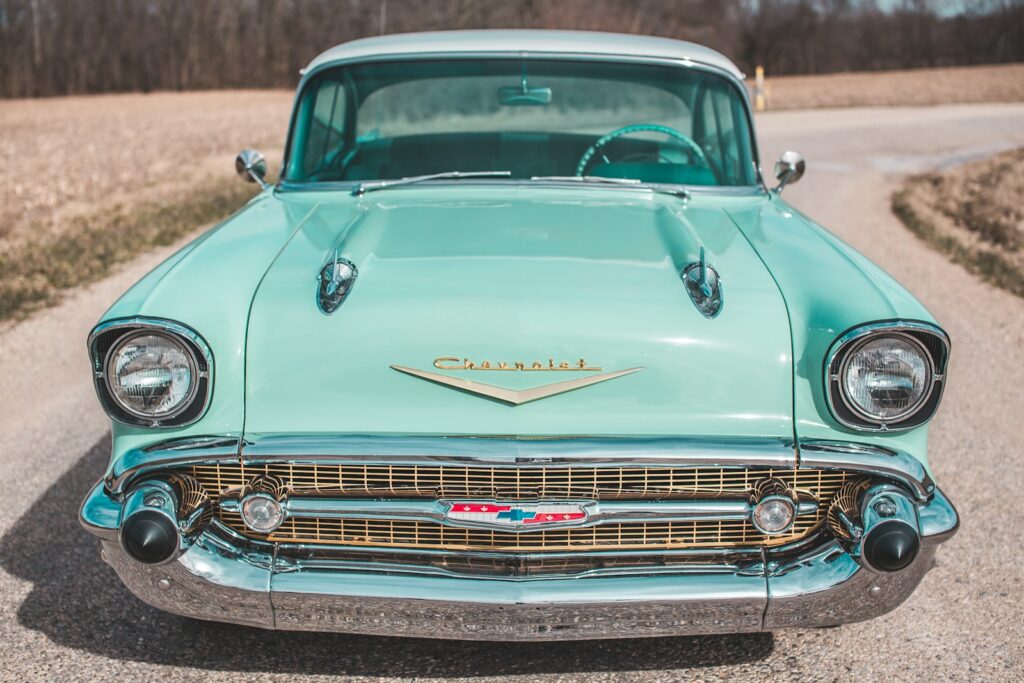
**Engines & Equity: What Factors To Consider When Looking For An Investment-Grade Classic**
One of the most fundamental factors that profoundly impacts a classic car’s value is its **Originality**. The closer a vehicle remains to its factory-stock condition, the more valuable it inherently becomes. This includes everything from the paint color remaining original to the interior trim and mechanical components being as they left the assembly line.
Furthermore, the extent and quality of any restoration work play a pivotal role. While a professional, historically accurate restoration can certainly enhance value, modifications – even with upgraded aftermarket parts – almost always lead to a significant decline. The holy grail for collectors is a “matching numbers” example, meaning it retains its original engine, gearbox, and frame with corresponding serial numbers from the factory, signifying unblemished authenticity. Specimens with early production numbers also tend to command a premium, adding to their distinctiveness and appeal.
Unsurprisingly, a vehicle’s **Rarity** is another major determinant of its worth. The total number of examples produced profoundly influences its market value, as scarcity often fuels demand. Beyond mere production figures, elements such as the presence of rare factory features, like a sunroof, or being a rare variant, such as a left-hand drive (LHD) model in a predominantly right-hand drive market, can dramatically increase desirability.
Similarly, limited-edition models or high-performance trim levels are inherently rarer and thus more valuable. Indeed, one could confidently argue that rarity forms a significant bedrock of the intrinsic value found in investment-grade classic cars, creating a powerful incentive for collectors to seek out and preserve these unique automotive treasures.
The presence of comprehensive **Documentation & Records** is equally vital, providing an objective and detailed account of a classic car’s life. Even if a vehicle has led a relatively uneventful existence, it will always be substantially more valuable if sold with extensive records of its ownership history, meticulous servicing, and any competition endeavors.
This thorough documentation offers potential investors invaluable insight into how the vehicle was cared for and maintained over its lifespan, as well as if it suffered from any major recurring issues. Furthermore, the retention of original items from the factory, such as included tool kits and owner’s manuals, significantly contributes to an example’s value, signaling a high degree of care and completeness.

**Innovation & Historical Significance** are powerful drivers of value in the classic car market. Models that pioneered a new technology or system, boasted bar-raising speed or performance capabilities for their era, or were powered by an idiosyncratic engine configuration often hold higher valuations. These vehicles are not just cars; they are milestones in automotive engineering and design, marking significant advancements.
Early generations of now-iconic models, such as the initial Ford Bronco or BMW M3, also tend to command substantial premiums. Their status as the originators of a celebrated lineage imbues them with a unique historical weight that resonates deeply with collectors and enthusiasts, cementing their place as key investments.
While the beauty of a classic car can certainly be in the eye of the beholder, its **Appearance** plays a considerable role in its valuation. Though there are indeed valuable classic cars with unconventional or “long-in-the-tooth” aesthetic designs that might not universally be considered beautiful, a vehicle with an iconic appearance that has gracefully stood the test of time tends to result in notably higher valuations.
If a vehicle’s design was penned by a famous designer or coachbuilder, such as Giorgetto Giugiaro or Pininfarina, this association can also significantly raise its worth, elevating it from mere transportation to a work of art. The enduring visual appeal and design pedigree often translate directly into stronger market demand and sustained appreciation.
A documented **Competition History** can profoundly elevate a classic car’s worth, particularly if it was previously campaigned in a historically significant or high-level race or series. This factor becomes even more impactful if the specific example was particularly successful, achieving noteworthy race wins or championship titles. The provenance of a racing past adds an undeniable layer of prestige and proven performance.
Furthermore, having been driven or campaigned by a famous team or driver, or built by an iconic race shop or builder like Autodelta or Carroll Shelby, will further bolster its value. These associations connect the car to legendary moments and figures in motorsport, making it a tangible piece of racing heritage that collectors eagerly seek out.
Finally, the **Previous Ownership** of a classic car can hugely influence its market value. If a vehicle was owned by a noteworthy celebrity, especially one with strong ties to motorsport like a famous race car driver or an icon such as Steve McQueen or Paul Newman, this can exponentially increase its value. Such provenance adds a compelling narrative and exclusivity to the vehicle, turning it into a unique artifact.
What’s more, if the car in question was prominently featured in a film or TV show, this will also significantly raise its appeal and worth, tying it into popular culture history. On a more practical note, fewer previous owners typically indicates that the car has likely been better cared for and maintained in a more original state, which is always a positive indicator for its investment potential.
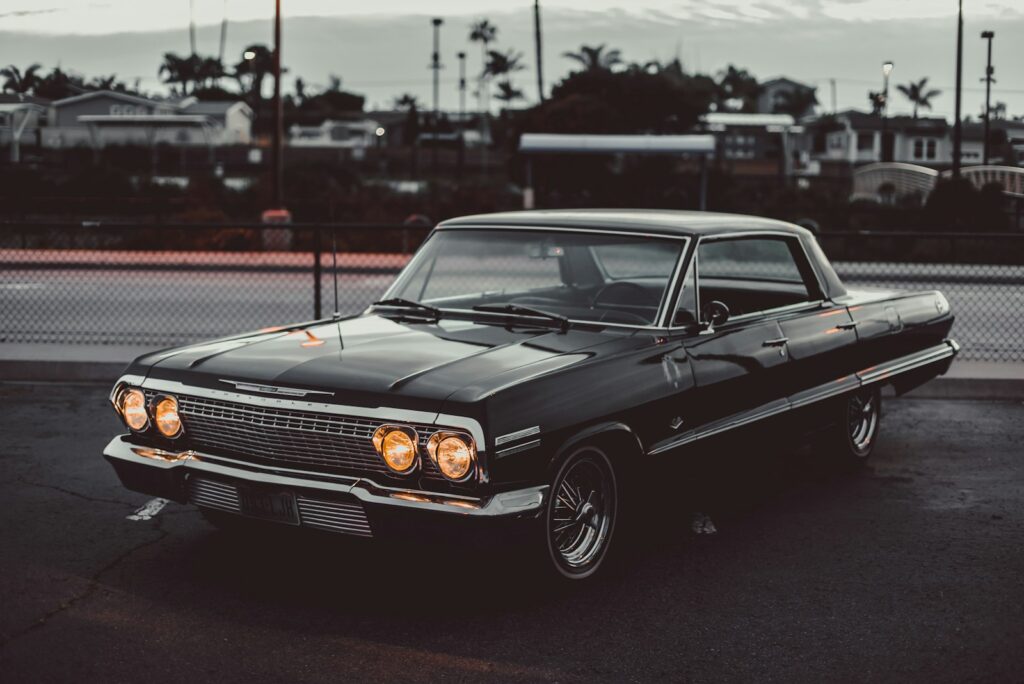
**Showcasing Eight More Promising Vintage Vehicles**
Now, armed with a deeper understanding of what makes a classic car an astute investment, let’s continue our authoritative journey through more promising vintage vehicles. These next eight models exemplify the diverse opportunities available in the market, from iconic British charm to robust Japanese engineering, all poised for continued appreciation. They represent not just a potential financial gain, but a chance to own a piece of automotive history that offers both thrill and long-term value.
Car Model Information: 1986 Mazda RX-7 GXL 2D Coupe
Name: Mazda RX-7
Caption: 1994 Mazda RX-7 R2 (FD3S)
Manufacturer: Mazda
Aka: Mazda Savanna RX-7 (Japan, 1978–1991),Mazda ɛ̃fini RX-7 (Japan, 1991–1997)
Class: Sports car
Production: 1978–2002,811,634 produced
Assembly: Hiroshima
Platform: Mazda F platform
Layout: Front-engine, rear-wheel-drive layout#Front mid-engine, rear-wheel-drive layout
Predecessor: Mazda RX-3
Successor: Mazda RX-8
Categories: 1980s cars, 1990s cars, 2000s cars, 24 Hours of Le Mans race cars, All articles needing additional references
Summary: The Mazda RX-7 is a front mid engine, rear-wheel-drive, rotary engine-powered sports car, manufactured and marketed by Mazda from 1978 through 2002 across three generations, all of which incorporated the use of a compact, lightweight Wankel rotary engine.
The first-generation RX-7, codenamed SA (early) and FB (late), is a two-seater two-door hatchback coupé. It featured a 12A carbureted rotary engine as well as the option for a 13B rotary engine with electronic fuel injection in later years. The second-generation RX-7, carrying the internal model code FC, was offered as a two-seater coupé with a 2+2 option available in some markets, as well as in a convertible body style. This was powered by the 13B rotary engine, offered in naturally aspirated or turbocharged forms. The third-generation RX-7, model code FD, was offered as a two-seater coupé with a 2+2 version offered as an option for the Japanese market. It featured a sequentially turbocharged 13B REW engine.
More than 800,000 RX-7s were manufactured over its lifetime.
Get more information about: Mazda RX-7
Buying a high-performing used car >>>
Brand: Mazda Model: RX-7
Price: $13,991 Mileage: 52,352 mi.
Read more about: Buckle Up, Fam! Everything You NEED to Know About Fast X – From Jaw-Dropping Stunts to Shocking Twists!
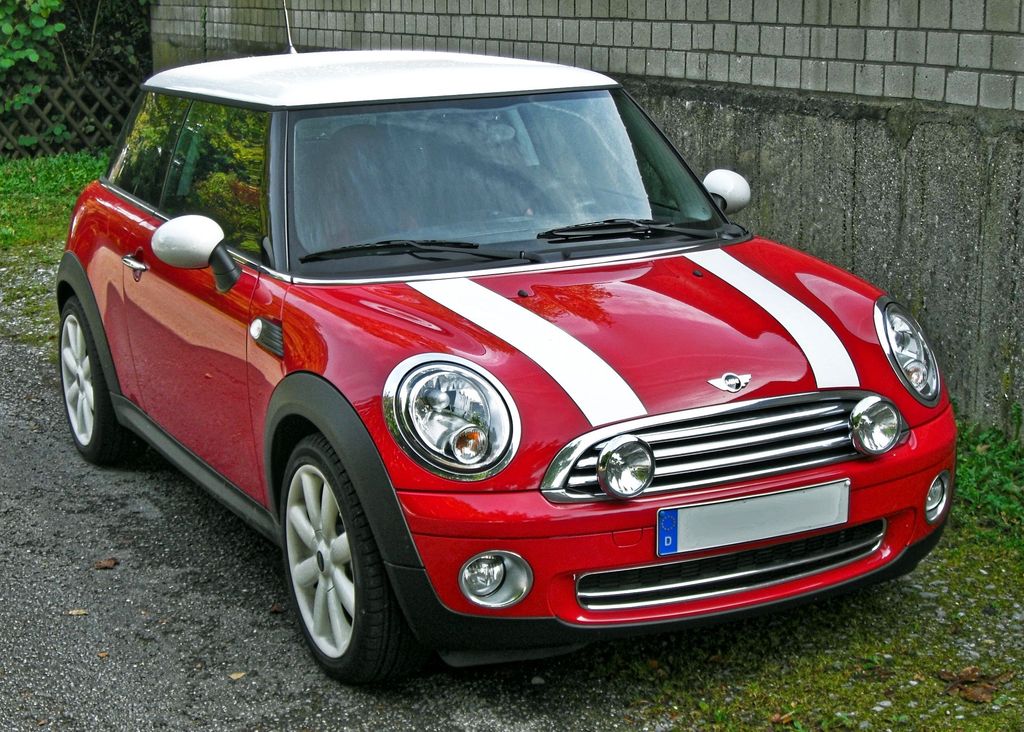
8. **Mini Cooper** A true bonafide 1960s British popular culture icon, the original Mini Cooper boasts an incredibly long and varied production history, having been manufactured for several decades by a variety of different entities, including the British Motor Corporation, British Leyland, and the Rover Group, just in the UK alone. Its diminutive size and clever packaging revolutionized urban driving and cemented its status as a design masterpiece that transcended its humble origins. This broad lineage, spanning from 1959 to 2000, offers a wide spectrum of investment opportunities.
Spurred on by the enduring popularity of today’s revived Mini model, these charming, pint-sized vehicles have experienced a major influx in interest, which has directly resulted in the steady growth of value for clean, well-preserved used specimens. Their universal appeal, combined with their historical significance as a symbol of British ingenuity, makes them highly sought after by collectors worldwide. The availability of various engine sizes, from the 848cc to the 1,275cc inline-fours, provides options for different budgets and performance preferences, all within a continually appreciating market.
The Mini Cooper offers an investment that is as much about character and heritage as it is about financial return. Its status as a cultural icon, capable of being driven and enjoyed, adds another layer of desirability. For those seeking an accessible entry point into classic car ownership with strong long-term potential, particularly models from its extensive desirable years, the original Mini Cooper stands as a compelling and charismatic choice that embodies both fun and shrewd investment.
Car Model Information: 2013 MINI Coupe Cooper S
Sp: uk
Caption: 1959 Morris Mini-Minor (first one built)
Name: Mini
Aka: Austin 850,Rover Mini,Austin Cooper,Austin Mini,Austin Partner,Austin Seven,Innocenti Mini,Leyland Mini,Morris 850,Morris Mascot,Morris Mini Minor,Riley Elf,Wolseley 1000 (South Africa),Wolseley Hornet
Layout: Front-engine, front-wheel-drive layout
Manufacturer: British Motor Corporation,British Leyland,Rover Group
Production: 1959–2000 (5.38 million)
Class: City car
BodyStyle: sedan (car),convertible,Station wagon,sedan delivery,coupe utility
Engine: BMC A-series engine,Straight-four engine
Designer: Alec Issigonis,John Sheppard (car designer)
Transmission: 4-speed manual,AP automatic transmission,5-speed manual (optional extra on some later models)
Length: cvt,cvt,cvt
Width: cvt
Height: cvt
Weight: cvt
Wheelbase: cvt,cvt
Related: Mini Moke,Austin Metro,Innocenti Mini,Mini Wildgoose,Mini Marcos
Successor: Austin Metro,Mini Hatch
Assembly: Panmure, New Zealand
Categories: 1960s cars, 1970s cars, 1980s cars, 1990s cars, 2000s cars
Summary: The Mini is a very small two-door, four-seat car, produced for four decades over a single generation, with many names and variants, by the British Motor Corporation (BMC) and its successors British Leyland and the Rover Group, and finally (briefly) under BMW ownership. Minis were built as fastbacks, estates, convertibles, and various other body styles. Minus a brief 1990s hiatus, from 1959 into 2000, an estimated 5.38 million of all variations combined were built, and the Mini’s engines also powered another 2 million Mini Metros, though the Mini eventually outlasted its successor.
Initially, the Mini was marketed under the Austin and Morris names, as the Austin Seven and Morris Mini-Minor; the Austin Seven was renamed Austin Mini in 1962 and Mini became a marque in its own right in 1969. Retrospectively, the car is known as the “Classic Mini” to distinguish it from the modern MINI family of vehicles produced since 2001 by German carmaker BMW, who took ownership of the Mini name following the sale of Rover Group in 2000.
This distinctive two-door car was designed for BMC by Sir Alec Issigonis. Its space-saving transverse engine and front-wheel drive layout – allowing 80% of the area of the car’s floorpan to be used for passengers and luggage – influenced a generation of car makers. The front-wheel-drive, transverse-engine layout were used in many other “supermini” style car designs such as Honda N360 (1967), Nissan Cherry (1970), and Fiat 127 (1971). The layout was also adapted for larger subcompact designs. In 1999, the Mini was voted the second-most influential car of the 20th century, behind the Ford Model T, and ahead of the Citroën DS and Volkswagen Beetle. It is also considered an icon of 1960s British popular culture.
The Mini Mark I had three major UK updates: the Mark II, the Clubman, and the Mark III. Within these was a series of variations, including an estate car, a pick-up, a van, and the Mini Moke, a jeep-like buggy. The performance versions, the Mini Cooper and Cooper “S”, were successful as both race and rally cars, winning the Monte Carlo Rally in 1964, 1965, and 1967. The Mini was manufactured in England at the Longbridge plant in Birmingham located next to BMC’s headquarters and at the former Morris Motors plant at Cowley, as well as in Australia (Victoria Park/Zetland BMC Australia factory) and later also in Spain (Authi), Belgium, Italy (Innocenti, as the Innocenti Mini), Chile, Malta, Portugal, South Africa, Uruguay, Venezuela, and Yugoslavia (IMV). In 1980, British Leyland launched the Mini’s follow-up, the Austin Metro, however the Mini outlasted it and continued to be produced at Longbridge until October 2000.
Get more information about: Mini
Buying a high-performing used car >>>
Brand: Mini Model: Cooper
Price: $12,425 Mileage: 78,956 mi.
Read more about: Decoding Canine Discomfort: 7 Surprising Things Humans Do That Dogs Secretly Despise

9. **Nissan 240SX** The Nissan 240SX, a sporty vintage Japanese hatchback, stands as the successor to Nissan’s 200SX S12 model and has steadily emerged as a popular collector car. Produced in two distinct generations – the S13 (from 1989 to 1994) and the S14 (from 1994 to 1998) – both models are now increasingly sought after by enthusiasts, a trend that is only expected to grow as surviving examples, particularly those that haven’t been heavily modified or raced into the ground, become scarcer.
Powered primarily by a robust 2.4-liter inline-four engine, the 240SX gained significant acclaim for its balanced chassis, engaging rear-wheel-drive dynamics, and ample tuning potential, which made it a favorite in the drifting community. What makes this model particularly appealing from an investment perspective is its relative affordability compared to many other appreciating classics on this list, with clean examples typically trading hands for anywhere from $10,000 to $25,000, offering a more accessible entry point for new investors.
Its growing popularity within the JDM (Japanese Domestic Market) scene, combined with its strong performance credentials and stylish design, ensures its continued upward trajectory in value. For those looking to invest in a modern classic that still offers an exhilarating driving experience and a strong community following, the Nissan 240SX represents a savvy acquisition, especially as pristine, unmolested examples become increasingly difficult to find.
Read more about: Consumer Reports’ Reliability Report: The Cars to Buy and Avoid
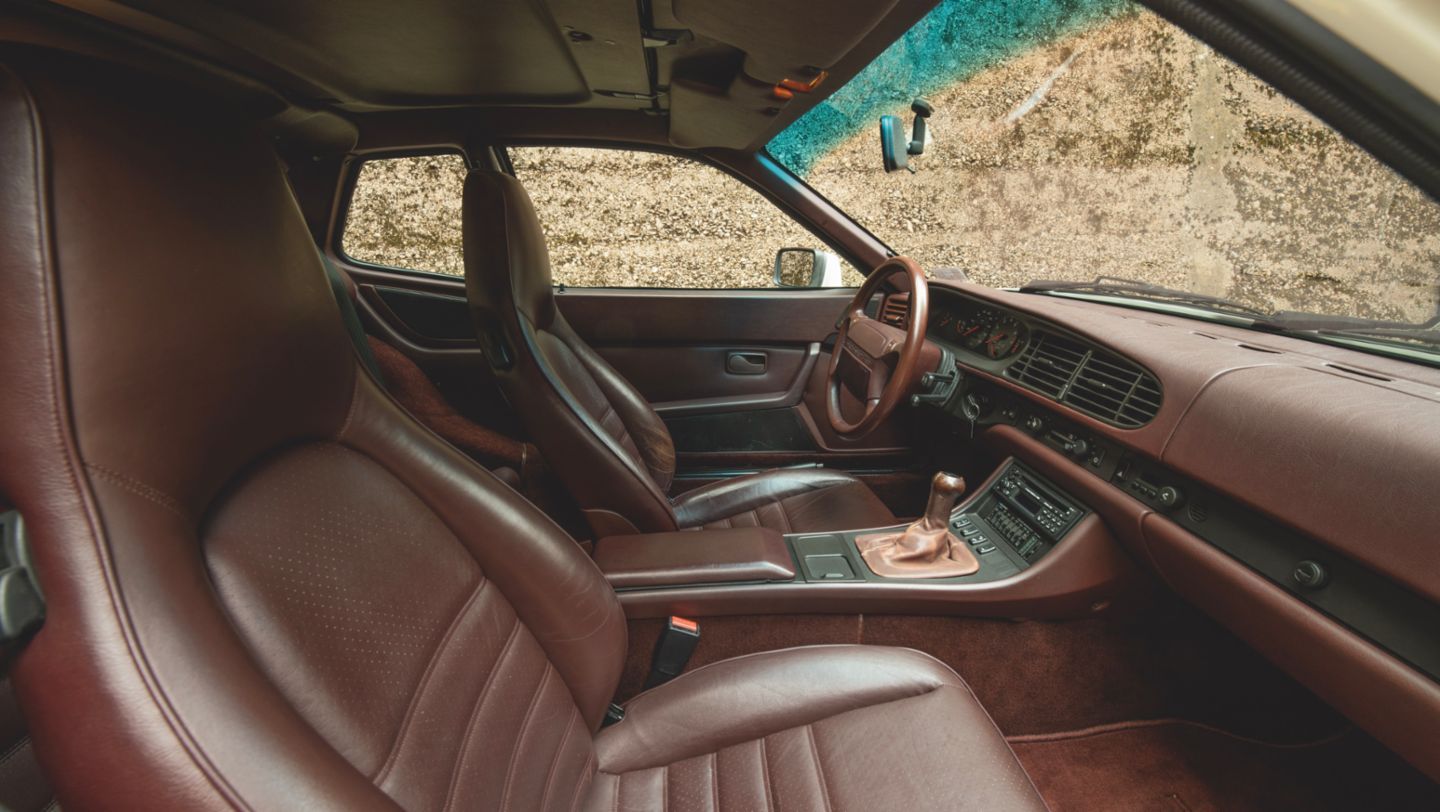
10. **Porsche 924/944** For a period, the Porsche 924 and 944 were unfairly viewed by some purists as mere rebadged Volkswagens rather than “true Porsches,” largely due to their front-engine, transaxle layouts differing from the traditional rear-engine 911. However, this perception has dramatically shifted in recent years, leading to a significant increase in their market value. This appreciation extends to virtually all vintage models from the Stuttgart automaker, even previously overlooked “oddball” models like the 914 and 928, solidifying Porsche’s widespread investment appeal.
Solely speaking from a financial standpoint, these front-engined Porsches are easily among the best investment cars currently available. Their historical undervaluation has created a substantial growth opportunity, making them highly attractive to discerning collectors and investors seeking entry into the prestigious Porsche brand without the prohibitive cost of a classic 911. Their balanced performance, timeless design, and accessible pricing have contributed to their resurgence in popularity.
With desirable years spanning a considerable period from 1976 to 1991, and a variety of engine options including 2.0L, 2.5L, 2.7L, and 3.0L inline-fours, including turbocharged variants, there’s a wide range of models to choose from. Over 163,000 Porsche 944 units were produced worldwide, meaning they are relatively accessible, but prices are steadily rising, confirming their status as a perfect vehicle for collectors seeking to own a Porsche that offers both a thrilling driving experience and excellent investment potential.
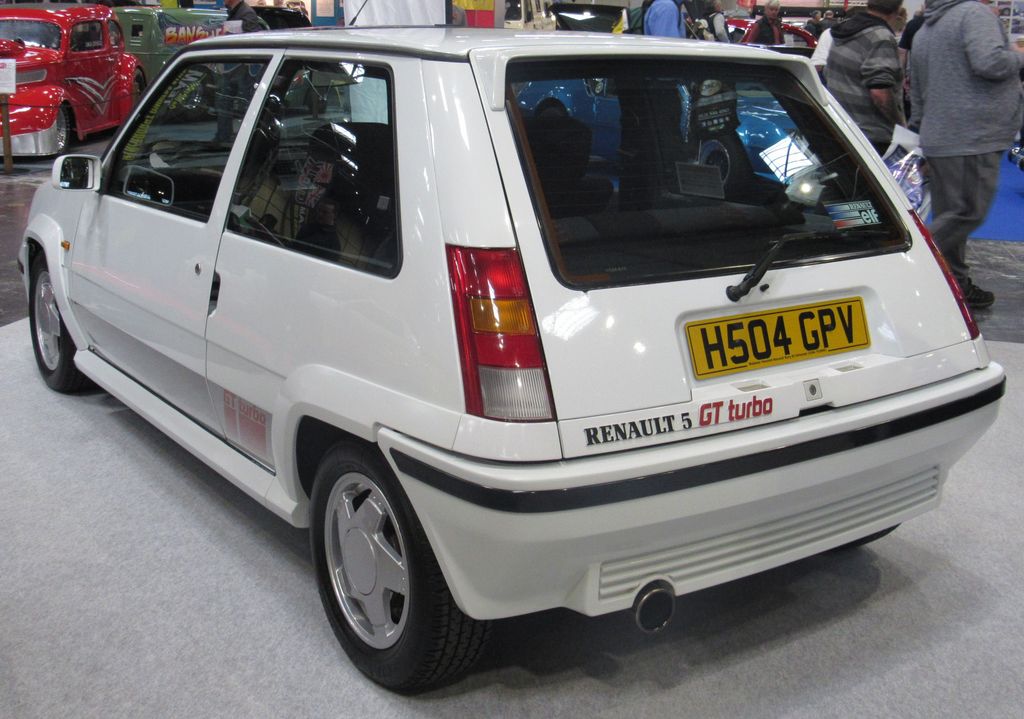
11. **Renault 5 GT Turbo** The Renault 5 GT Turbo is a truly special homologated, street-legal Euro classic, directly derived from an iconic Group B rally car. This connection to the legendary, no-holds-barred era of rally racing imbues it with an undeniable sense of performance heritage. It’s not just a ridiculously cool car that’s undeniably thrilling to drive, thanks to its lightweight construction and turbocharged engine, but it also stands out as potentially the fastest-appreciating classic car in the current market that can still be acquired for under six-figures.
Remarkably, this compact, high-performance machine has seen its value skyrocket by a staggering 25% over the last year alone, a testament to its burgeoning popularity among collectors. Its Group B lineage and distinctive ultra-widebody aero kit, which gives it an aggressive, purposeful stance, contribute significantly to its sought-after status. The design itself, characterized by its muscular flares and functional aerodynamics, hints at its potent capabilities and racing pedigree.
With desirable years primarily from 1980 to 1986, and powered by turbocharged 1.4L or 1.5L inline-four engines, the Renault 5 GT Turbo delivers an exhilarating driving experience that is as pure as it is potent. Its unique combination of rally heritage, exhilarating performance, and rapid value appreciation makes it an incredibly compelling and intelligent choice for any serious automotive investor looking for a unique and rewarding asset.
Car Model Information: 2024 Acura RDX Base
Name: Renault 5
Caption: Second generation R5
Manufacturer: Renault
Production: 1972–1996
Class: Supermini car
Successor: Renault Clio,Renault Twingo
Categories: 1980s cars, 1990s cars, Articles with French-language sources (fr), Articles with Spanish-language sources (es), Articles with short description
Summary: The Renault 5 is a five-passenger, three or five-door, front-engine, front-wheel drive hatchback supermini manufactured and marketed by the French automaker Renault over two generations: 1972–1985 (also called R5) and 1984–1996 (also called Super 5 or Supercinq).
The R5 was marketed in the United States and Canada as Le Car, from 1976 until 1983. Renault marketed a four-door sedan variant, the Renault 7, manufactured from 1974 until 1984 in Spain by Renault’s subsidiary FASA-Renault and exported to select markets.
The Renault 5 became the best-selling car in France from 1972 until 1986, with a total production exceeding 5.5 million over 14 years, making it France’s most popular car.
Get more information about: Renault 5
Buying a high-performing used car >>>
Brand: Renault Model: 5 GT Turbo
Price: $42,875 Mileage: 27,708 mi.
Read more about: Get Ready: Toyota MR2 Revival in 2026 Rumored to Pack GR Corolla Power

12. **Suzuki Samurai** Once widely perceived as a quirky, budget-friendly 4×4 platform, the Suzuki Samurai has quietly but steadily transformed into a genuine collector car. This compact off-roader has cultivated a niche, yet incredibly dedicated, following that continues to expand, recognizing its surprising capabilities and unique charm. Its robust, go-anywhere nature, coupled with its compact dimensions, makes it a distinct proposition in the burgeoning classic SUV market, standing apart from its larger counterparts.
The accessibility of the Samurai also makes it an attractive investment, particularly for those with a more modest budget. With average examples typically fetching around $10,000, it remains one of the more affordable classic cars to add to a collection. This low entry point, combined with its growing collector status, suggests a strong potential for future appreciation as its dedicated fanbase expands and well-preserved examples become increasingly scarce.
Spanning desirable years from 1985 to 1995, and powered by a reliable 1.3L inline-four engine, the Suzuki Samurai offers a unique blend of utility, simplicity, and nostalgic appeal. Its rugged simplicity and ease of maintenance further enhance its desirability for long-term ownership. For investors seeking a distinctive, characterful classic that is still relatively understated but rapidly gaining traction, the Samurai presents a compelling opportunity.
Car Model Information: 1987 Suzuki Samurai Base
Name: Suzuki Jimny
Caption: 2019 Suzuki Jimny SZ5
Manufacturer: Suzuki
Production: April 1970 – present (2.85 million units sold by September 2018)
Class: Off-road vehicle,mini SUV
BodyStyle: SUV,van,convertible,pickup truck
Layout: Front-engine, rear-wheel-drive layout,Front-engine, four-wheel-drive layout
Chassis: Body-on-frame
Related: Suzuki Vitara,Maruti Gypsy
Categories: 1980s cars, 1990s cars, 2000s cars, 2010s cars, All articles with minor POV problems
Summary: The Suzuki Jimny (Japanese: スズキ・ジムニー, Suzuki Jimunī) is a series of four-wheel drive off-road mini SUVs, manufactured and marketed by Japanese automaker Suzuki since 1970.
Originally belonging to the kei class, Japan’s light automobile tax/legal class, the company continues to market a kei-compliant version for the Japanese and global markets as the Jimny, as well as versions that exceed kei-class limitations. Suzuki has marketed 2.85 million Jimnys in 194 countries through September 2018.
Get more information about: Suzuki Jimny
Buying a high-performing used car >>>
Brand: Suzuki Model: Samurai
Price: $17,500 Mileage: 1,000 mi.
Read more about: 20 Blockbusters You Didn’t Know Were Remakes
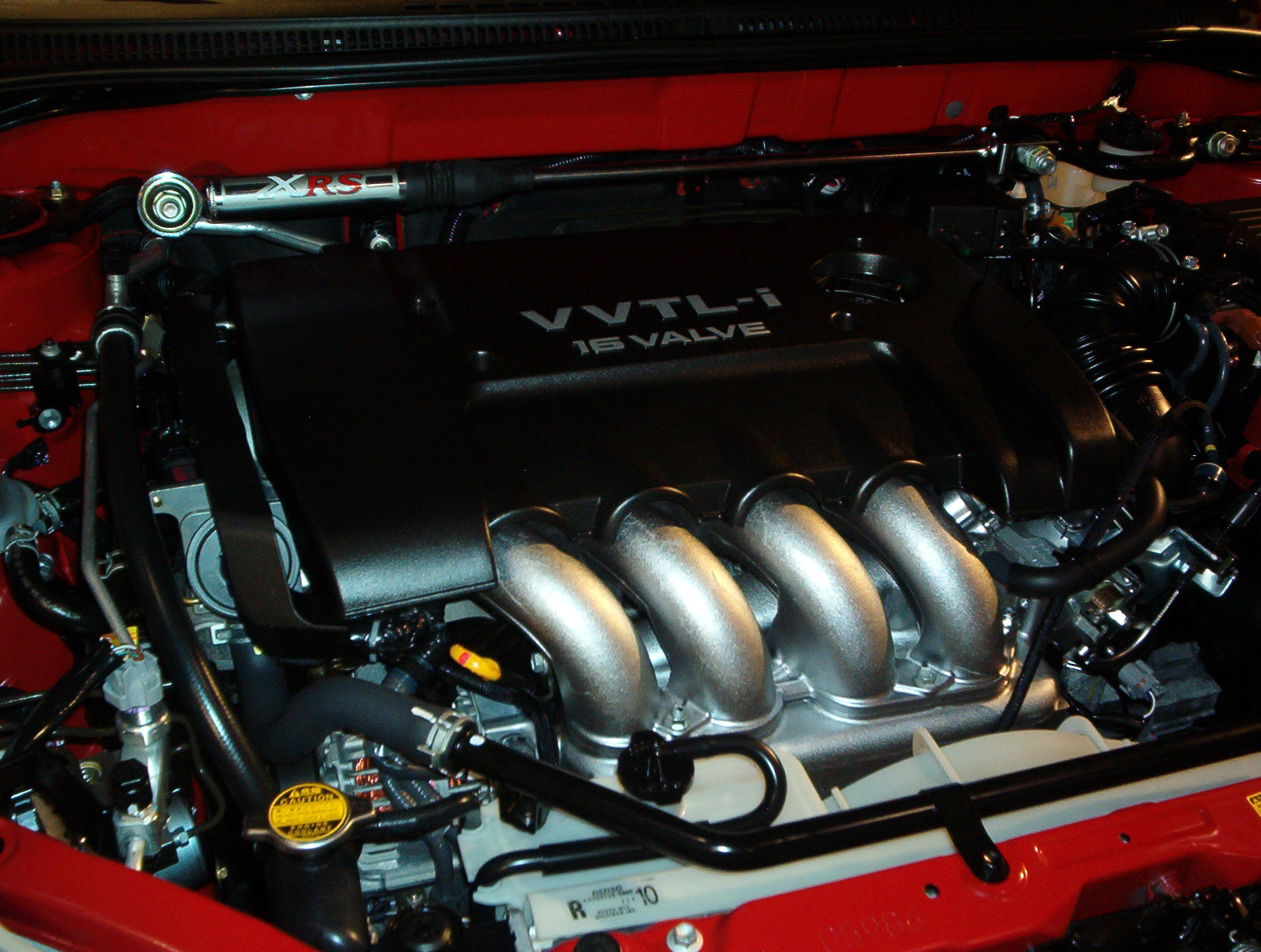
13. **Toyota MR2** The Toyota MR2 stands as an exotic yet remarkably affordable sports car classic, holding the significant distinction of being Japan’s first-ever rear mid-engined production car. Produced across three distinct generations, with the first two (from 1984 to 1999) being by far the most desirable from an investment and collector’s standpoint, the MR2 encapsulates the spirit of 1980s and 90s sports car design, featuring iconic pop-up headlights that epitomize the era.
The MR2 was extensively campaigned in motorsport, both by factory teams and countless privateer drivers across the globe, a testament to its inherent performance capabilities and balanced chassis. This racing heritage adds considerable credibility and allure to the model, reinforcing its status as a true driver’s car. Its reputation for Toyota’s legendary reliability and robust engineering further enhances its appeal, ensuring relatively manageable maintenance costs for a mid-engined sports car.
With desirable years ranging from 1984 to 1999, and engine options including 1.5L, 1.6L, and supercharged 1.6L inline-fours, the MR2 offers a thrilling, responsive driving experience. Its unique configuration, combined with its racing pedigree and strong following, makes it one of the few collector cars that is sure to get snatched up as soon as it hits the market, signaling strong liquidity and consistent appreciation for this Japanese classic.
Car Model Information: 1988 Toyota MR2 Supercharged
Name: Toyota MR2
Caption: Second generation MR2
Manufacturer: Central Motors
Aka: Toyota MR (France and Belgium)
Production: 1984–2007
Assembly: Sagamihara, Kanagawa
Class: Sports car
Layout: Rear mid-engine, rear-wheel-drive layout
ModelYears: 1985–2007
Categories: 1990s cars, 2000s cars, All Wikipedia articles written in American English, All articles containing potentially dated statements, All articles needing additional references
Summary: The Toyota MR2 is a line of two-seater, mid-engined, rear-wheel-drive sports cars, manufactured in Japan and marketed globally by Toyota from 1984 until 2007 over three generations: W10 (1984–1989), W20 (1989–1999) and W30 (1999–2007). It is Japan’s first rear mid-engined production car.
Conceived as a small, economical and sporty car, the MR2 features a straight-four engine, transversely mounted in front of the rear axle, four-wheel disc brakes, and fully independent coilover suspension – MacPherson struts on each wheel.
The name MR2 stands for either “mid-ship run-about 2-seater” or “mid-engine, rear-wheel-drive, 2-seater”. In French-speaking markets, the vehicle was renamed Toyota MR because the abbreviation “MR2” sounds like the profanity “merdeux” when spoken in French.
Get more information about: Toyota MR2
Buying a high-performing used car >>>
Brand: Toyota Model: MR2
Price: $27,000 Mileage: 36,611 mi.
Read more about: Get Ready: Toyota MR2 Revival in 2026 Rumored to Pack GR Corolla Power
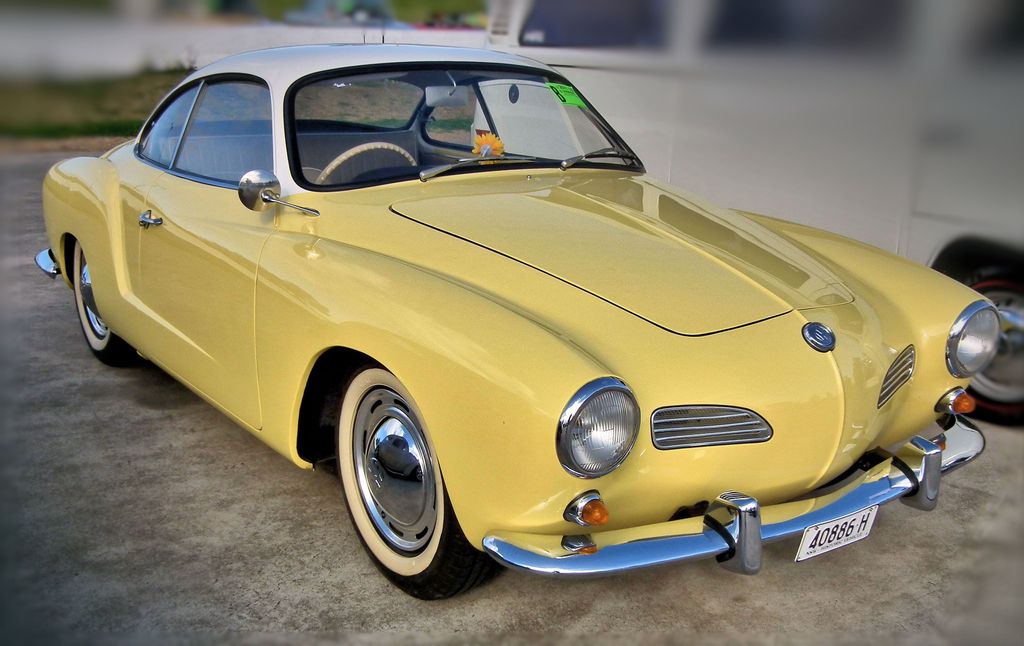
14. **Volkswagen Karmann Ghia** The Volkswagen Karmann Ghia is a truly stunning classic car that currently offers a remarkable entry point into the vintage market, with a strong expectation for substantial value increase. This elegant vehicle is uniquely built atop the robust and widely available Type 1 Beetle platform, which not only contributes to its distinctive character but also ensures relative ease of maintenance and parts availability compared to more exotic classics.
Its graceful bodywork was famously penned by the renowned Italian design firm Carrozzeria Ghia and meticulously hand-built by the esteemed German coach-building house Karmann. This transatlantic collaboration resulted in a timeless design that blends Italian flair with German engineering practicality, making it a visually captivating machine. The Ghia’s aesthetic appeal is a major draw, appealing to those who appreciate classic lines and understated elegance.
Furthermore, one of the most compelling advantages of the Volkswagen Karmann Ghia as an investment-grade classic is its surprising practicality: it can actually be driven on a regular basis, provided it is properly maintained, without significantly impacting its long-term value. This blend of beauty, drivability, and strong appreciation potential for desirable years spanning from 1955 to 1974 makes the Karmann Ghia an incredibly appealing and intelligent choice for the discerning collector.
Car Model Information: 2024 Acura RDX Base
Name: Volkswagen Types 14, 34, and 145
Caption: 1962 Type 14 VW Karmann Ghia
Manufacturer: Volkswagen
Production: Germany,Type 14: 1955–1974,Type 34: 1961/1962–1969,
445,238 total units built:,Coupé: 364,401 (Type 14 and 34),Cabriolet: 80,837 (all Type 14)
Brazil,Type 14: 1962–1971,TC (Touring Coupé): 1972–1975,
41,689 total units built:,Coupé: 23,393,Cabriolet: 177,TC (Touring Coupé): 18,119
Related: Volkswagen Beetle,Volkswagen Type 3,Puma (car manufacturer)#Volkswagen era
Class: Sports car
BodyStyle: convertible (car)
Engine: flat-4
Designer: Carrozzeria Ghia
Layout: RR layout
Successor: Porsche 914,Volkswagen Scirocco,Volkswagen SP2
Assembly: Osnabrück
Categories: 1960s cars, 1970s cars, All articles with unsourced statements, Articles with short description, Articles with unsourced statements from May 2023
Summary: The Volkswagen Karmann Ghia are a family of three overlapping sports car models produced by Volkswagen, marketed in 2+2 coupe (1955–1975) and 2+2 convertible (1957–1975) body styles, though German production ended one year before that in Brazil. Internally designated the Type 14 (1955–1975), the Type 34 (1962–1969), and the Type 145 TC (1972–1975; Brazil), the Karmann Ghia cars combined the floorpans and mechanicals of the Type 1 / Beetle or Type 3 ‘ponton’ models with styling by Italy’s Carrozzeria Ghia, and hand-built bodywork by German coachbuilding house Karmann.
The 1955 Type 14 Karmann Ghia was just the second Volkswagen passenger car ever produced, after the Beetle, and launched six years before the Type 3 notchbacks, fastbacks and Variants (squarebacks). They were faster and more expensive than the Beetle, but very cramped in the back, despite their wider, postwar and nearly slabsided body design. Two years later, in 1957, a convertible was added.
In 1961, the Karmann Ghia briefly lost its title of fastest Volkswagen, upon launch of the more powerful 1500cc Type 3 models, but later that year, Volkswagen, Ghia, and Karmann presented an all new Karmann Ghia – Type 34, using the Type 3’s floorpan and 1500cc powertrain. Made from 1962 to 1969, this had both new, more modern, angular and roomier bodywork; and a new, more luxurious interior, making it substantially more expensive than all other VW passenger cars. Additionally, the Type 34 was one of the world’s first cars with a power operated steel sunroof option. The Type 34 Karmann Ghia thus became VW’s range-topper again – costing up to twice the price of a Beetle – while the cheaper Type 14 remained in production. Only the latter offered a convertible.
Failure to offer the Type 34 in the United States – the Karmann Ghia’s most important market – combined with high pricing elsewhere likely contributed to limited sales, and after the type 14 also received the 1500cc engine in 1967, production of Type 34s was ended during 1969. Volkswagen of Brazil nevertheless looked for an alternative in its market segment, and so Carrozzeria Ghia was again commissioned, to design a third Karmann Ghia model, for the South American market, the Karmann Ghia TC (Touring Coupé), made in Brazil from 1972–1975. The result was a stylish, rakish fastback that offered good interior space for a 2+2 car.
For its final model year, the vestigial rear seat in the Type 14 was discontinued for North American models, as it lacked provisions for seat belts; all Karmann Ghias for 1974 were marketed strictly as two-seaters.
More than 445,000 Karmann Ghias were produced in Germany over the car’s production life, not including the Type 34 variant. Volkswagen do Brasil (Volkswagen Brasil) produced 41,600 Type 34s in Brazil for South America between 1962 and 1975.
Long noted for its exterior styling, the Karmann Ghia was designed with input from numerous individuals at Carrozzeria Ghia and was strongly influenced by Virgil Exner’s work, though all of its designers passed without a definitive individual styling attribution.
Get more information about: Volkswagen Karmann Ghia
Buying a high-performing used car >>>
Brand: Volkswagen Model: Karmann Ghia
Price: $42,875 Mileage: 27,708 mi.
Read more about: The Cars That Stole the Show: 16 Iconic Vehicles from Movies and TV

15. **Volvo 1800S** The Volvo 1800S stands as an objective automotive classic, celebrated for its sleek midcentury design that has managed to wonderfully stand the test of time, proving its enduring appeal. Its distinctive profile, often associated with its appearance in the television series “The Saint,” has cemented its place in popular culture and automotive history, distinguishing it from Volvo’s more utilitarian reputation.
Clean, original, or professionally restored examples of the 1800S typically trade anywhere from $20,000 to $60,000, reflecting its established collector status. However, for the astute investor with a keen eye and a willingness to undertake a project, neglected specimens can still be acquired for only a few thousand dollars, presenting an incredibly profitable investment opportunity as restoration brings them back to their full potential value.
With desirable years spanning from 1961 to 1973, and powered by reliable 1.8L or 2.0L inline-four engines, the Volvo 1800S offers a unique blend of Scandinavian robustness and undeniable sporting elegance. While its investment potential is strong, it’s also worth noting that this is undoubtedly one of the coolest and most interesting cars that Volvo has ever produced, offering both a sound financial asset and immense personal satisfaction for its owner.
Car Model Information: 2024 Volvo XC60 B5 Core
Name: Volvo P1800
Caption: 1965 Volvo 1800S
Designer: Pelle Petterson
Manufacturer: Volvo Cars
Assembly: West Bromwich,Torslanda,Gothenburg,Arica
Production: 1961–1973,coupé: 39,407,sports estate: 8,077
Layout: Front-engine, rear-wheel-drive layout
Transmission: Volvo M40 transmission,Overdrive_(mechanics)#In_Europe,Borg-Warner 35 transmission
Length: convert
Width: 1700 mm
Abbr: on
Height: convert
Weight: convert
Wheelbase: 2450 mm
Related: Volvo Amazon
Engine: Volvo B18 engine#B18,Volvo B18 engine#B20
Class: Sports car
BodyStyle: coupe,shooting brake
Predecessor: Volvo P1900
Categories: 1970s cars, All articles needing additional references, All articles with dead external links, All articles with unsourced statements, Articles needing additional references from March 2018
Summary: The Volvo P1800 (pronounced eighteen-hundred) is a 2+2, front-engine, rear-drive sports car manufactured and marketed by Volvo Cars between 1961 and 1973. Originally a coupé (1961–1972), it was also offered in a shooting brake configuration toward the end of its production (1972–1973). Styling was by Pelle Petterson under the tutelage of Pietro Frua when Frua’s studio was a subsidiary of the Italian carrozzeria Ghia, and the mechanicals were derived from Volvo’s Amazon/122 series.
Marketed as a touring car rather than a sports car, the P1800 became widely known when driven by British actor Roger Moore in the television series The Saint, which aired from 1962 to 1969.
In 1998, an 1800S owned by Irv Gordon (1940–2018) was certified as the highest mileage private vehicle driven by the original owner in non-commercial service—having exceeded 3.25 million miles (over 5.23 million km) as of his death in 2018.
Get more information about: Volvo P1800
Buying a high-performing used car >>>
Brand: Volvo Model: 1800S
Price: $40,899 Mileage: 11,828 mi.
Read more about: The Unbelievable Mileage Club: 17 Vehicles That Lasted Longer Than Expected
As we conclude this authoritative exploration into the world of classic car investment, it’s clear that the journey extends far beyond mere financial figures. While the remarkable appreciation rates of these vintage vehicles present a compelling argument for their inclusion in a diversified portfolio, the true magic lies in the tangible joy of ownership. These aren’t just assets; they are captivating pieces of history, engineering marvels that evoke passion, and vehicles that connect us to a bygone era of automotive excellence. Choosing the right classic car for investment is a deeply personal endeavor, one that marries shrewd financial strategy with an undeniable love for the roar of an engine and the gleam of perfectly polished chrome. Whether you seek a weekend cruiser, a showstopper, or a meticulously preserved artifact, the market for investment-grade classics offers an unparalleled opportunity to drive your passion towards prosperity. Happy hunting, and may your automotive adventures be both rewarding and exhilarating.



